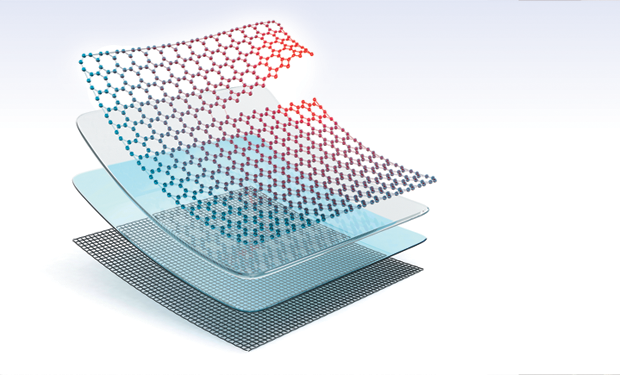Maintaining sterility in emergency and operating rooms can be challenging, especially in cases of highly infectious disease outbreaks or toxic spills. A simple nick in a surgical glove under such circumstances could have deadly consequences. But, now, a variety of promising new materials in development may lead to everything from self-healing gloves and bandages to bone, blood vessel, and muscle scaffolding implants that could repair themselves the way tissues do. In some cases, repair might be triggered by an external stimulus, such as heat; in other cases, these materials would naturally heal by themselves over time.
A New Self-Healing Polymer
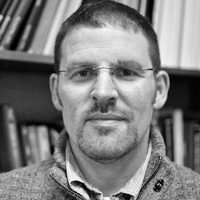
One such new polymer, known as supramolecular polyurethane, is being developed by a team led by Prof. Wayne Hayes at the University of Reading, United Kingdom (Figure 1, right). The material could be used as a wound dressing, forming an impervious barrier that, if cut or scraped, would liquefy enough to flow and repair the damage within minutes, regaining its full strength and becoming barely visible within two hours. “The field is moving very quickly,” says Hayes.
This new material could be durable enough to allow dressings to remain in place longer, eliminating the need for the painful peeling off of old dressings, which can actually delay healing. The polymer is self-assembling under room temperature conditions, allowing it to flow almost as a liquid, reconstitute its surface after a breach, and do so repeatedly. Hayes’ team has tested a bandage of the material on pig skin, a close analog of human skin, with good adhesion and self-healing results.
The material’s properties can be tuned by adjusting the exact balance of constituent molecules to allow the self-healing liquefaction to happen at any particular desired temperature, as low as 37 °C, i.e., body temperature, says Hayes, who is a professor of polymer chemistry.
“Because it’s held together with weak hydrogen bonds, you can get it to disassemble, and it begins to flow like a liquid,” he explains. While some self-healing materials have used this property before, Hayes says, “It’s this transition that we’ve used to our advantage. We played around with the molecular structure to tune the temperature where the change between solid and fluid occurs.” And since publishing those initial results last year, he continues, “we’ve taken these principles to address materials that can heal in aqueous environments,” which makes the materials “increasingly biomedically relevant.”
But that work is still at an early stage. “It’s very much a research material,” he says. While the basic materials in the polymer are not toxic, the actual medical uses would require testing and approval, and it could take two to five years for the polymer to find its way to market. But potentially, Hayes explains, “If we’re able to apply a wound dressing based on this material and it could withstand [the rigors of being exposed to daily activities], you wouldn’t have to change it so frequently.”
Materials Used for Biomedical Structures
In the longer term, because such materials can disassemble and liquefy under a given stimulus, i.e., heat, light, or electricity, they could also be used for temporary structures, such as scaffolding during surgery to hold particular organs, blood vessels, and other structures in place. The materials could then just dissolve away once their function is accomplished, rather than requiring a potentially tricky removal.
They could also provide scaffolding to promote the healing of bone so that, once the bone cells have filled in the structure and gained the necessary strength, the scaffolding could be liquefied away, Hayes elaborates. Still, “we need to do far more biological testing to optimize how to grow cells on these surfaces and to optimize the materials for 3-D printing,” he adds.
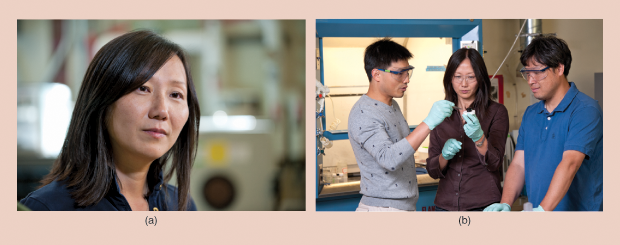
A whole different family of self-healing materials is being explored by a team at the University of California, Riverside, (UC Riverside) in collaboration with Stanford University, under the leadership of Zhenan Bao (Figure 2), the K.K. Lee Professor in the School of Engineering at Stanford University. These materials, known as hydrogels, flow and self-heal at even lower temperatures, down to −20 °C (−4 °F).
The secret of this material, Bao says, involves a chemical bonding process known as crosslinking, in which molecules are linked together in a netlike pattern that allows them to stretch far more than most materials, e.g., about 100-fold in length, while still returning to the original length. The material can also reconnect even after being cut or broken. Composed of a finely tuned mix of metal molecules and organic ligands, Bao explains, the material “is attuned to the right strength so that, as the polymer is being stretched, the bonds break and recover continuously.”
The material has other interesting properties, according to Bao. It responds to an electrical stimulus by contracting, suggesting that it could someday be used as a kind of artificial muscle. While other materials exist that have this musclelike ability to be electrically activated, they tend to fail completely or suffer serious degradation if there is a cut or even a pinhole through the material. The self-healing material, by contrast, would hardly be affected.
Currently, artificial muscles are used mostly in robotics, but the ability to endure many kinds of injuries and recover from them intact suggests that, ultimately, such materials might be suitable for use in prosthetic limbs, where the ability to withstand mechanical failures is more critical. Bao has also been exploring the use of such materials as a kind of artificial skin, e.g., to allow the embedding of sensors and electrodes in a prosthetic device’s artificial skin, ultimately making it possible for the user to receive instantaneous tactile sensations from the artificial limb, which would provide much-needed sensory feedback.
“The materials used to make the sensors undergo a lot of wear and tear” in actual use, Bao says, so having a self-healing capability could be a key factor in making such systems practical. Projects like these, she explains, require teams that encompass a wide variety of specialties, from chemical engineering to materials science, electrical engineering, biology, and medicine. “It requires a lot of different skills,” she continues, “and people from different areas working together.”
While such uses for prosthetics for real patients is still quite a way off, Bao says, the next steps—creating samples of such artificial skin material for initial testing—could happen very soon.
Artificial Organs for Medical Training
Another potentially significant application of self-healing materials is creating artificial organs on which surgeons in training can practice tricky procedures with no risk to patients. A team of researchers at the University of Colorado, Boulder, and UC Riverside has been tackling that application, beginning with developing an artificial colon.
The idea is to create a realistic simulation of the human intestinal system, complete with accurate material properties and motions, which include the constant rippling movements used to propel food through the intestinal tract. Within that material, a network of embedded sensors could enable constant monitoring of every stress, strain, and motion. Surgeons could then use the artificial intestines to work out the details of a surgical plan, practicing a procedure repeatedly to perfect the motions. But, of course, such a device would be useless if the whole thing had to be replaced every time it was perforated by a surgical instrument, especially in its hard-to-reach inner recesses. Self-healing materials would be a key need for such applications.
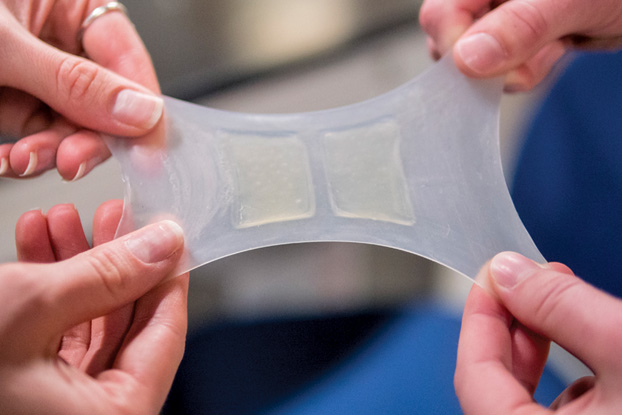
The system developed by the University of Colorado and UC Riverside team is based on hydraulically amplified self-healing electrostatic actuators, which they call HASEL (Figure 3). Beyond training, the system is expected to be useful for medical research and developing new screening methods for colorectal cancer, according to the team leaders, Mark Rentschler and Christoph Keplinger, both professors at the University of Colorado (Figure 4). Such research and development work is typically done with pigs, the researchers point out, but their anatomy has significant differences from that of humans, so having a more accurate replica could help to accelerate developments in screening and treatment.
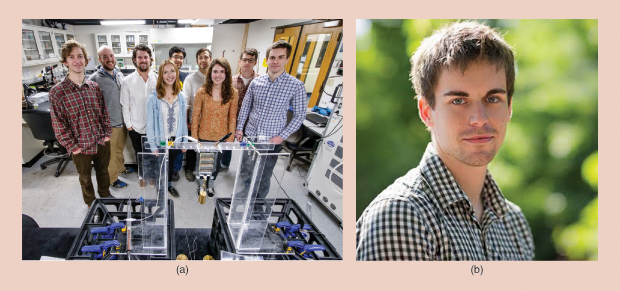
The Possibilities Seem Endless
The same materials developed for the artificial colon, which include a muscle-like material that produces contractions, have the potential to be used as gripping devices on prosthetic limbs, say Eric Acome and Tim Morrissey (Figure 5), graduate students working with Keplinger in Colorado and lead authors of an article describing this new self-healing artificial muscle material that appeared in Science in January 2018. “They could be also used for assistive devices that would be on the outside of the body,” Acome explains, “to help you recover from an injury.”
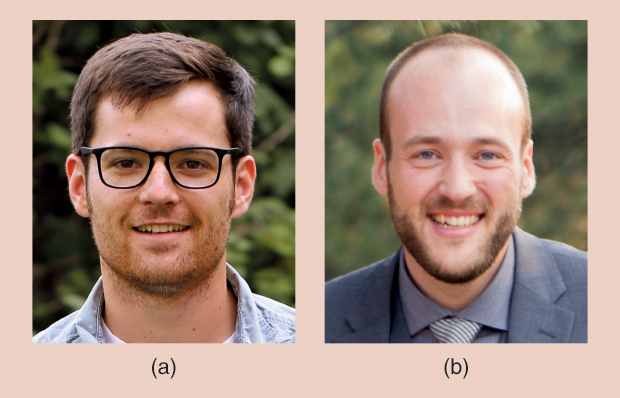
Such soft, electrically controllable materials, in this case based on a liquid dielectric material rather than the elastomeric polymers used in some other artificial muscles, “might also be used for surgical robots,” Acome continues, such as soft robotic devices that could be used to work inside the body, potentially minimizing the invasiveness of some procedures.
They may also provide a way of devising sensors that could remain on the skin for long periods, providing long-term monitoring of various health indicators, Morrissey says. There are already companies marketing such sensors, including StretchSense in New Zealand; however, these are not self-healing and so are subject to damage that a self-healing material would not. But, because they are made of similar kinds of basic polymers, such systems might be adapted to self-healing technology.
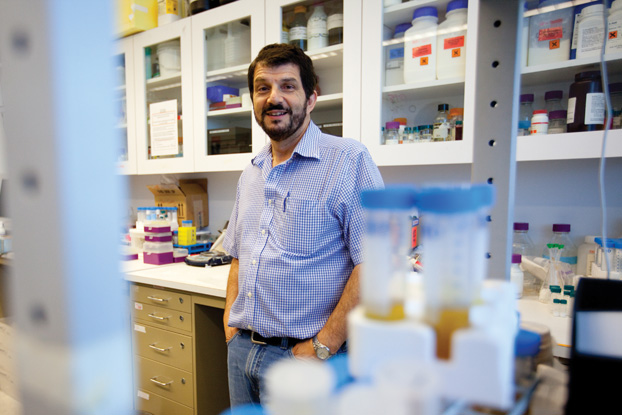
Yet another approach to the chemistry of self-healing materials has been developed by a team led by David Weitz, the Mallinckrodt Professor of Physics and Applied Physics at Harvard University (Figure 6). That team developed a hybrid rubber containing both the usual type of chemical bonds that rubber has (covalent bonds that give it strength) but also reversible bonds that can break and reform (Figure 7). The team accomplished this by creating a kind of molecular rope to tie the two kinds of bonds together, Weitz explains.
The resulting flexible, stretchable, and self-healing material could be substituted for virtually any application in which latex is currently used, Weitz suggests. This includes surgical gloves or films that would provide protection, even if cut or torn, and bandages that would be much better able to survive rough treatment.
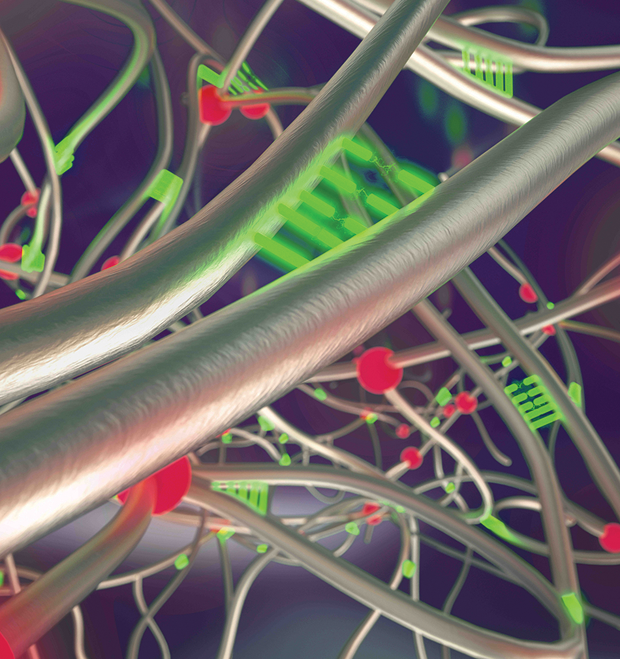
The constituent molecules “were being used for other things,” Weitz says, but no one had thought of combining them to produce this kind of self-healing material for biomedical applications. The insight to apply the materials came from post-doctorate researcher Li-Heng Cai, who did much of the work, according to Weitz. The principle is similar to that used in self-healing hydrogels, which form a semiliquid state that allows them to flow and reseal when cut.
There are many potential uses. “I don’t think we’ve even dreamed of all the things it could potentially extend to,” Weitz says. And the time is certainly ripe for bringing such materials into commercial use, according to industry analysts. A study last year by the business consulting firm Grand View Research projected that, by 2025, the market for self-healing materials (for all applications, not just biomedical) could top US$4 billion annually. Thermal polymers and hydrogels are expected to dominate the medical component of that market.
But, while Weitz and his team are looking into possible commercialization of the material, they haven’t yet made any decisions about the best near-term applications. “It depends on what makes sense,” he says. But they are eager for the new material to have a real-world impact. “We’d like to see our work get applied and get used to benefit society.”



